No products in the cart.
NEWS
Your Guide to Growing Juicy Cherry Tomatoes
Cherry tomatoes are a true delight, offering bursts of sweet flavor that elevate salads, snacks, and countless dishes. Fortunately, cultivating these small, vibrant fruits is remarkably accessible, making them an excellent choice for gardeners of all levels. Their manageable size makes them particularly well-suited for container gardening, fitting comfortably in compact spaces, on patios, or even balconies. All you truly need to get started is a sunny spot, quality soil, appropriate plant nutrition, and consistent watering.
While the world of tomatoes offers a vast array of options, cherry tomatoes stand out as a favorite for many home growers. If you’re just beginning your journey in growing tomatoes, cherry varieties provide a fantastic starting point. Their rapid maturity rate means you won’t wait long to enjoy your first harvest, and they are known for their generous yields. Often among the first tomatoes ready to pick, they are perfect for kicking off the summer harvest season. Beyond their speed, their inherent sweetness makes them exceptionally delicious, especially when allowed to ripen fully on the vine, capturing peak flavor right in your own space.
Choosing the Perfect Cherry Tomato Variety
The selection of cherry tomato varieties is incredibly rich, boasting well over a hundred cultivars. These range widely in fruit color, extending beyond the familiar bright red to include shades of orange, yellow, and even deep mahogany, often referred to as “black.” Shape also varies, with intriguing pear-shaped fruits adding visual interest to your harvest basket. You can find both treasured heirloom types and modern hybrid varieties among the cherry tomato options.
It’s worth noting the distinction between cherry tomatoes and grape tomatoes. While sometimes grouped together, they are not identical. Cherry tomatoes are typically larger and possess a rounder shape. Grape tomatoes, conversely, tend to be more oblong or grape-shaped, often having a meatier texture and slightly less juice compared to their cherry counterparts.
The size of the plant itself is another factor to consider when selecting a variety. Despite the small fruit size, cherry tomato plants can range from compact dwarf types, ideal for limited spaces, to standard-sized varieties that can grow quite large.
Furthermore, you’ll need to decide between determinate and indeterminate growth habits, as both occur within the cherry tomato family. Indeterminate varieties are vining plants. They require staking or trellising to support their continuous growth and will produce fruit throughout the season until stopped by the first autumn frost. Determinate types, on the other hand, develop into more compact, bush-like plants. They typically produce the majority of their fruit in a concentrated period, often over a couple of weeks, making them suitable for gardeners who prefer a large harvest all at once or have less space for vertical growth.
Some of the most popular and reliable cherry tomato varieties recommended for home gardens include:
- Sweet 100: Known for its prolific clusters of small, very sweet red fruit.
- Black Cherry: A favorite for its larger, round fruits with complex, slightly smoky mahogany-colored skin.
- Yellow Pear: Distinctive, charmingly teardrop-shaped golden fruits with a mild, sweet flavor.
- Green Envy: Produces unique, pear-shaped fruits that remain green when ripe, offering a sweet, tangy taste.
- Sun Gold: Highly prized for its exceptionally sweet, medium-sized orange fruits that ripen early.
- Small Fry: A compact plant specifically bred for smaller spaces and containers, yielding small red fruits.
- Sunchola: Offers delicate fruits with a unique chocolatey tinge and rich flavor profile.
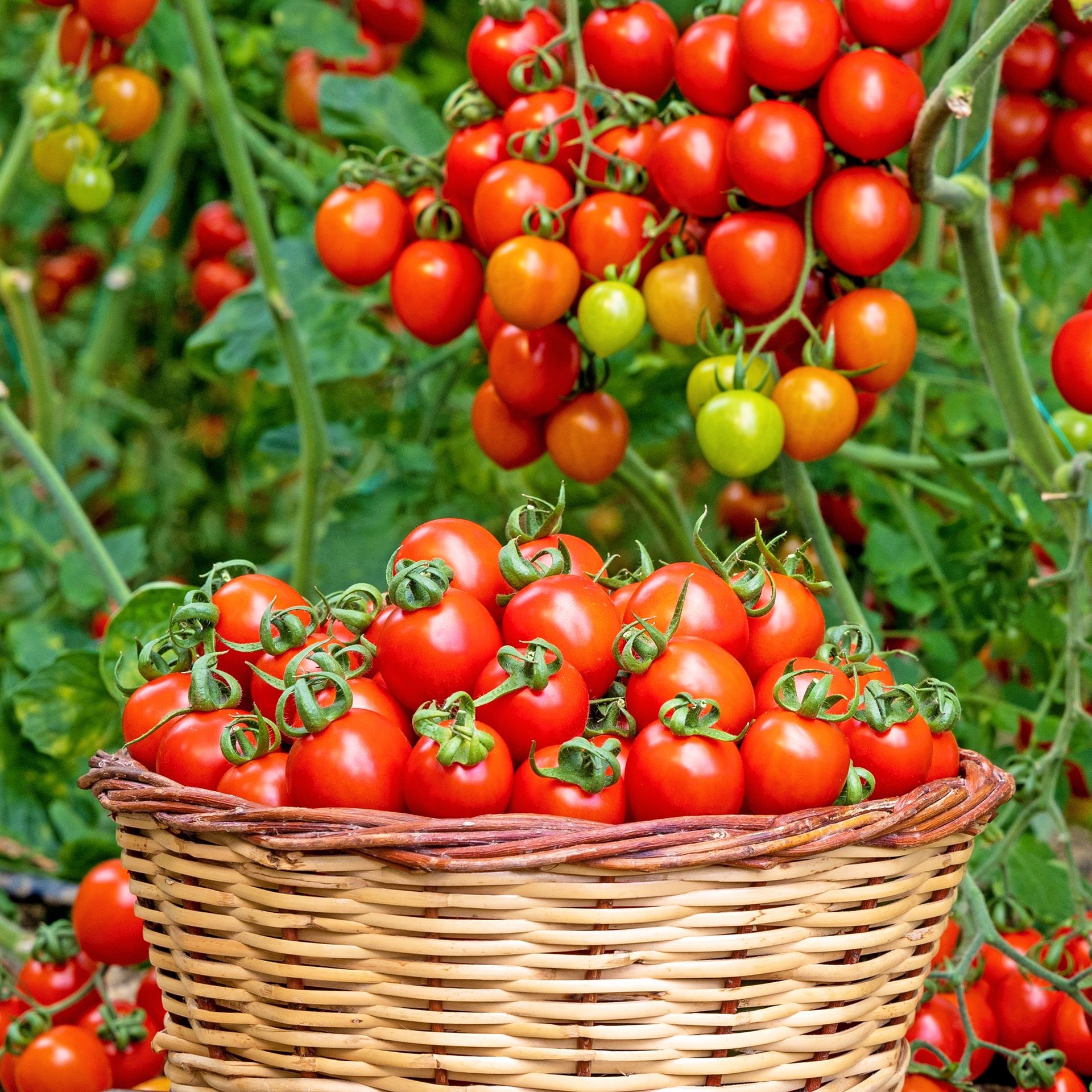 Assortment of freshly harvested red, orange, and yellow cherry tomatoes in a rustic woven basket
Assortment of freshly harvested red, orange, and yellow cherry tomatoes in a rustic woven basket
Starting Your Cherry Tomato Journey: Seeds or Seedlings?
From the moment a cherry tomato seed germinates to the day you pick your first ripe fruit, the process typically spans about 50 to 65 days. This relatively quick turnaround time makes cherry tomatoes a highly appealing choice for growing directly from seed. You’ll often be enjoying a bountiful harvest of these sweet gems long before larger tomato varieties are ready. Beyond the faster harvest, starting from seed is generally a more economical approach than purchasing pre-grown seedlings, and it opens up a much wider universe of varieties for you to explore – many unique types are only available as seed.
For gardeners aiming to maximize their harvest period, starting tomato seeds indoors approximately eight weeks before your local last expected frost date is an excellent strategy. Some gardeners find that soaking their tomato seeds overnight in warm water before planting can help to accelerate the germination process. When sowing, use a high-quality seed-starting mix, which provides the ideal balance of drainage and moisture retention for young roots. Sow seeds into small pots, trays, or biodegradable seed cells, keeping the mix consistently moist but never waterlogged.
Once tiny seedlings emerge, they require a warm environment and ample light to thrive. Providing supplemental light with a grow light for about 14 hours daily is highly effective in encouraging sturdy growth and preventing seedlings from becoming “leggy” – a common issue caused by insufficient light exposure. Before moving your young plants outdoors permanently, it’s crucial to “harden them off” by gradually exposing them to outdoor conditions (wind, sun, varying temperatures) over a week or two. This process toughens them up and prepares them for the transition to the garden or larger containers.
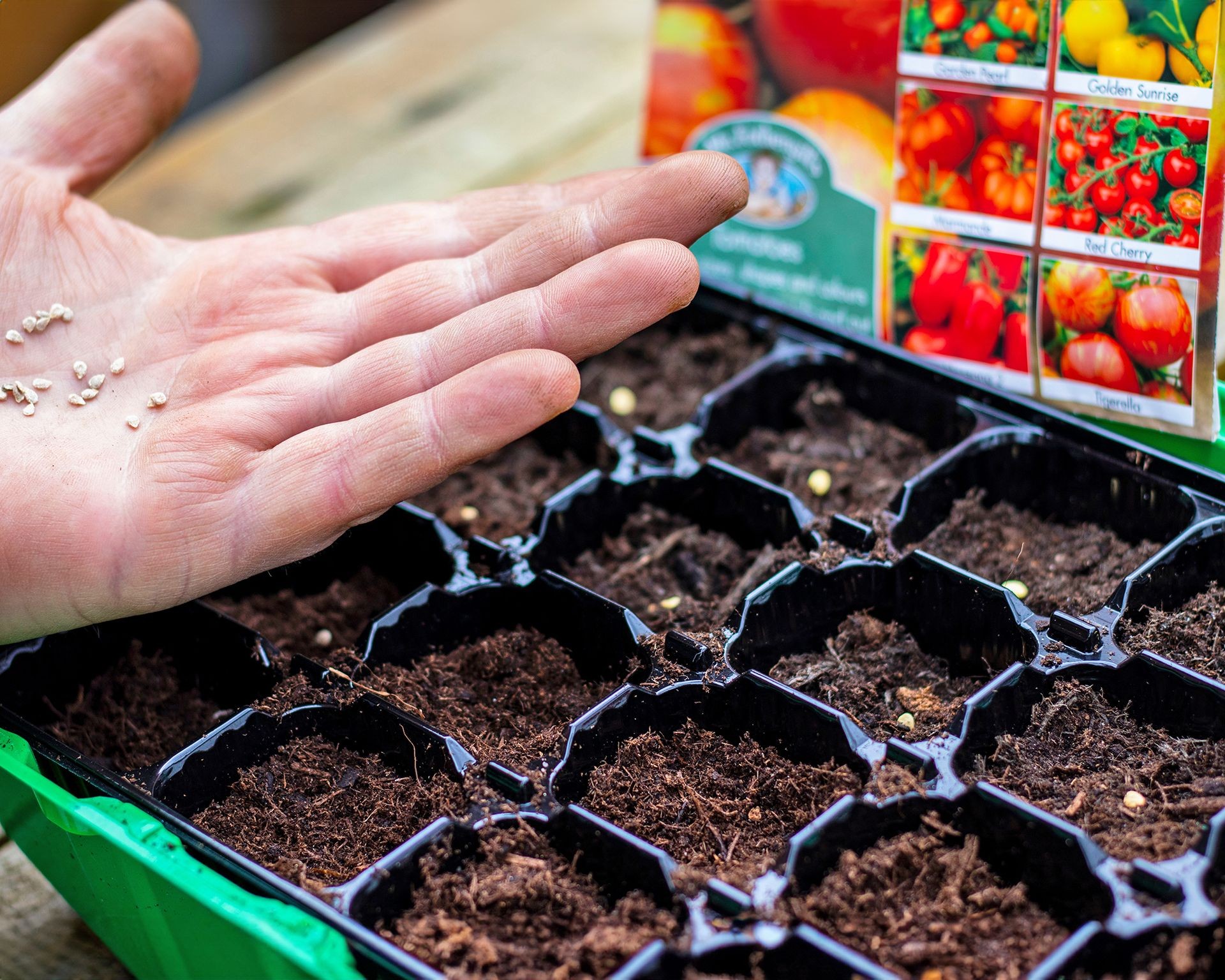 Gardener carefully planting small tomato seeds into compartments of a seedling tray filled with growing mix
Gardener carefully planting small tomato seeds into compartments of a seedling tray filled with growing mix
Planting Cherry Tomatoes for Success
Whether you nurtured your cherry tomato plants from seed or purchased healthy seedlings, they cannot be safely planted outdoors until all risk of frost has completely passed in your area. Young, tender tomato plants are very susceptible to cold damage and will likely die if exposed to freezing temperatures. The precise timing for planting tomatoes outdoors varies significantly depending on your local climate, but it will generally fall sometime in the spring, based on your specific last frost date.
In addition to waiting for warm weather, ensure your seedlings have reached a size of about 6 to 10 inches (15 to 25 cm) tall before transplanting them into their final location. At this stage, their root systems and stems are robust enough to handle the stress of being moved.
Before planting, take time to prepare the site thoroughly. Clear away any weeds, large stones, or debris from the planting area. When digging the planting holes, proper spacing is key. Remember that even though the fruits are small, cherry tomato plants, especially indeterminate types, can grow quite large and bushy. Aim to leave at least two feet (about 60 cm) of space between each plant to allow for adequate air circulation and growth.
To give your plants a strong start, consider incorporating amendments into the planting hole. A small handful of garden lime can be added to the bottom of the hole if your soil pH is low, helping to make calcium available. Mixing in plenty of organic matter, such as well-rotted compost or aged manure, provides essential nutrients for sustained growth. Alternatively, a small amount of balanced tomato fertilizer can be mixed into the soil at the bottom of the hole according to product instructions.
Examine your cherry tomato seedling while it’s still in its original small pot. Carefully remove any small stems or shoots that are growing from the main stalk below the level where you plan to bury the plant. When you gently slide the seedling out of its pot, lightly loosen or “ruffle” the roots if they appear tightly bound (root-bound). The unique planting technique for tomatoes involves burying a significant portion of the bare stem. Plant the seedling deeply in the prepared hole, burying the stem right up to the level of the lowest remaining set of leaves. This encourages the buried stem to develop numerous additional roots, resulting in a more robust and stable plant capable of supporting a heavy fruit load.
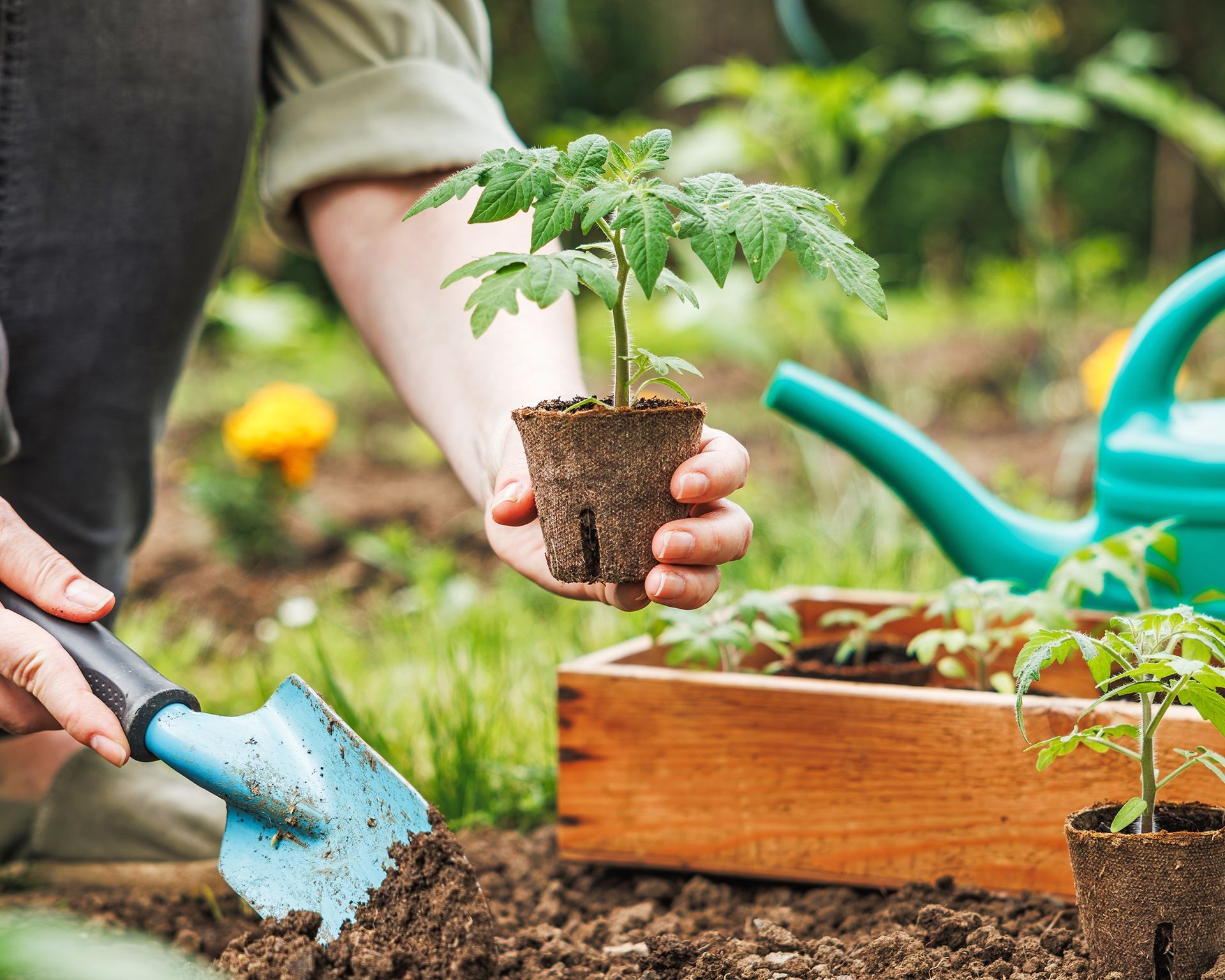 Gardener using a small trowel to plant a cherry tomato seedling deep into prepared garden soil
Gardener using a small trowel to plant a cherry tomato seedling deep into prepared garden soil
Essential Care for Abundant Cherry Tomatoes
While cherry tomatoes are often cited as among the easier tomato varieties to grow, providing consistent and appropriate care is absolutely crucial for achieving high yields of delicious fruit. By following these guidelines, you can ensure your plants receive the optimal conditions needed to thrive.
Light Requirements
Like their relatives in the nightshade family, tomato plants, including cherry varieties, have significant light needs. For robust growth and maximum fruit production, your cherry tomato plants will require a minimum of 6 to 8 hours of direct sunlight every single day. If plants receive less light than this, they tend to become weak and elongated (leggy), and fruit production will be sparse and inconsistent.
Choose a location in your garden that receives full sun throughout the day. If growing in containers, selecting pots with casters or wheels allows you to easily move the plant to follow the sun, maximizing its light exposure throughout the day.
Watering Practices
Given the inherent juiciness of cherry tomatoes, it’s understandable that the plants require a substantial amount of water. However, it’s a delicate balance; providing excessive water, especially inconsistently, can lead to problems like fruit splitting or cracking. How frequently you need to water your tomato plants depends heavily on local weather conditions, soil type, and whether they are in containers or in the ground. As a general principle, cherry tomatoes are happiest when they receive a deep, thorough soaking when needed, rather than frequent, shallow watering.
While the plant is young and focusing on developing its structure (vegetative growth), keep the soil consistently and moderately moist. After the first month, once the plant is larger and beginning to flower and set fruit, transition to watering deeply but less often. Check the soil moisture by sticking your finger about 2 to 3 inches (5 to 8 cm) deep; water thoroughly when the soil feels dry at that depth.
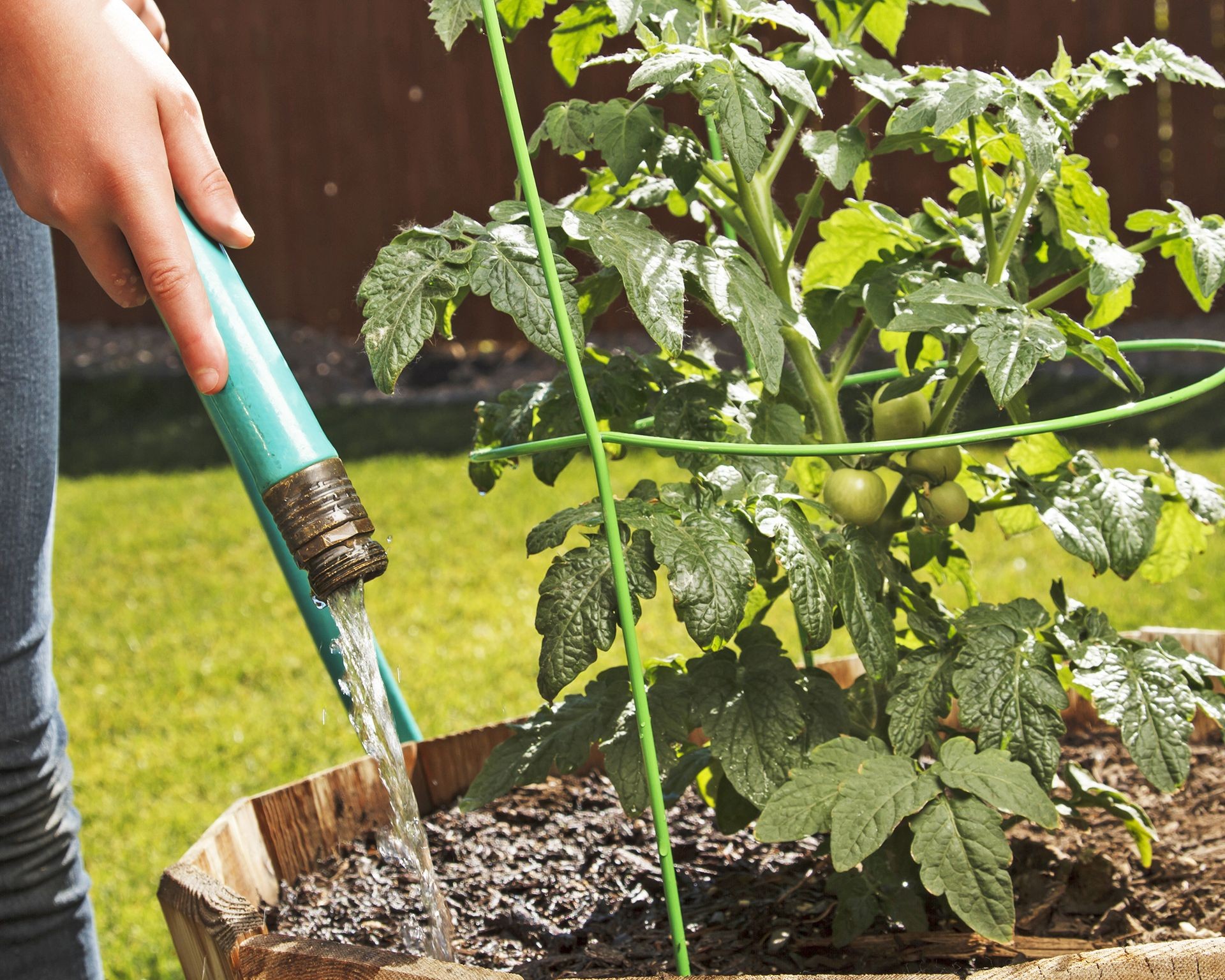 Water droplets clinging to the leaves and small developing fruits of a cherry tomato plant growing in a container
Water droplets clinging to the leaves and small developing fruits of a cherry tomato plant growing in a container
Temperature and Humidity
Cherry tomatoes are sensitive to cold and are considered frost-tender plants. As mentioned, planting outdoors must wait until all danger of frost has passed in your region. Extreme temperatures, both cold and hot, can negatively impact fruit set. Nighttime temperatures consistently falling below 55°F (13°C) can cause blossoms to drop, preventing fruit formation. Similarly, hot daytime temperatures combined with nighttime temperatures above 75°F (24°C) can also lead to blossom drop and reduced yield.
Cherry tomatoes do not thrive in high humidity environments. Excessive moisture in the air can promote fungal diseases and may diminish both fruit quality and overall yield. Ideal humidity levels for optimal growth and fruit production are generally considered to be between 65 to 70 percent at night and 80 to 90 percent during the day, although plants can tolerate a range outside of this.
Soil Preferences
Cherry tomatoes can be somewhat particular about their growing medium. They perform best in rich, nutrient-dense, and well-draining soil. A loamy soil texture, which balances clay, silt, and sand, is often considered the best soil for tomatoes. They are also happiest in soil with a slightly acidic pH, ideally between 6.2 and 6.5.
If your garden soil is heavy clay, incorporating significant amounts of compost or other well-rotted organic matter deep into the planting area is essential. This improves drainage, aeration, and nutrient content. For plants grown in containers, using a high-quality purchased potting soil specifically formulated for vegetables works well, ensuring good drainage and aeration.
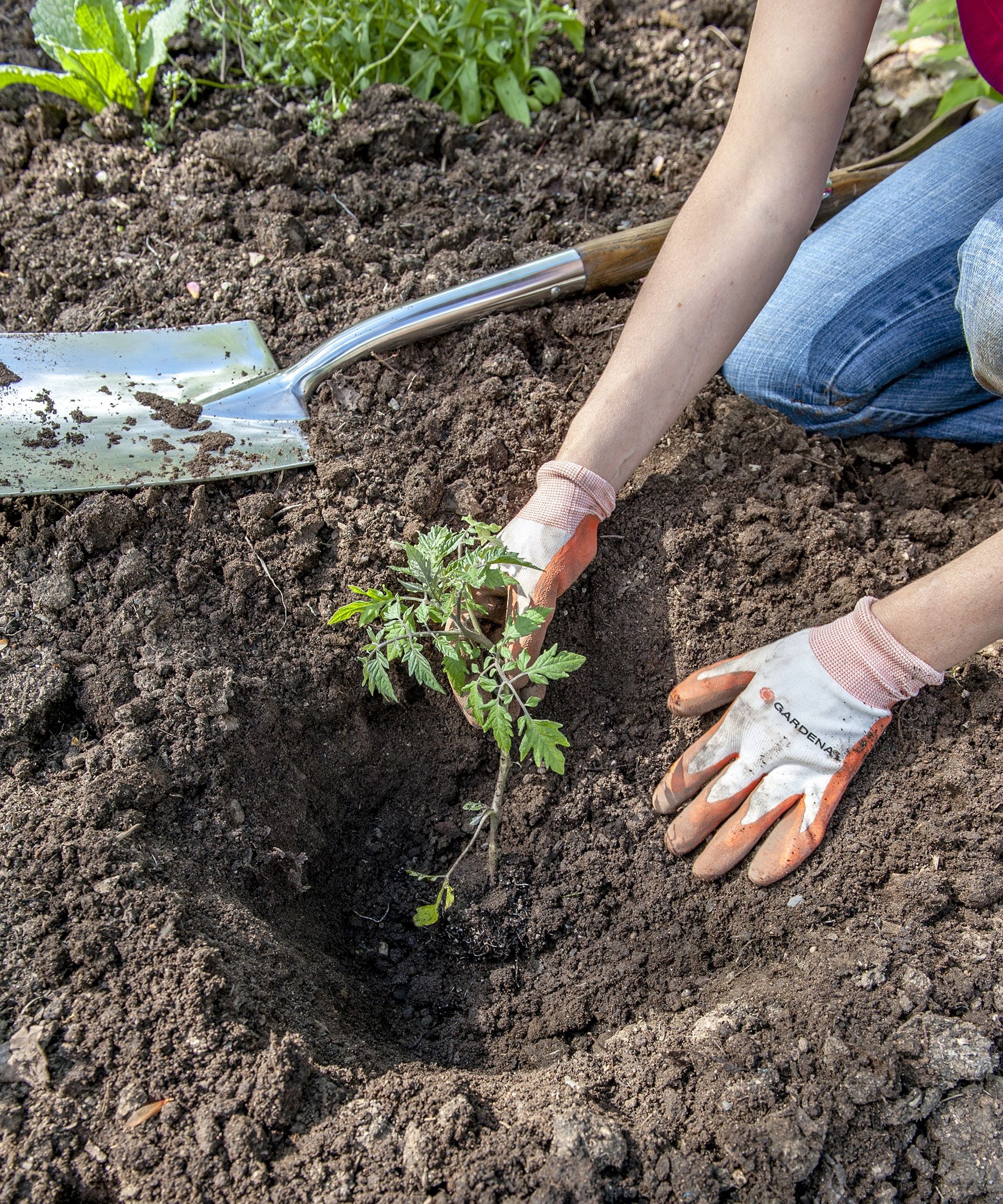 Hand gently holding a small cherry tomato seedling ready for planting into rich garden soil
Hand gently holding a small cherry tomato seedling ready for planting into rich garden soil
Fertilizing Your Plants
Cherry tomatoes are known as “heavy feeders,” meaning they require a significant amount of nutrients to support their vigorous growth and prolific fruiting. To achieve high yields of delicious, high-quality fruit, it’s beneficial to prepare your garden beds or container soil before planting by mixing in compost or well-rotted aged manure. This provides a slow-release source of nitrogen and improves soil structure. After the plants have been growing for about a month and are established, most varieties respond very well to gentle, regular feedings with a balanced fertilizer.
The best fertilizer for tomatoes typically has a slightly lower proportion of nitrogen compared to phosphorus and potassium, such as a 10-20-10 formulation. Nitrogen primarily encourages leafy growth, while phosphorus is crucial for flower and fruit development. Many gardeners also find success using organic nutrient sources like diluted fish emulsion, actively aerated compost tea, or liquid kelp extracts as regular supplements. Some innovative gardeners even create simple homemade tomato fertilizers using common kitchen scraps like crushed eggshells (for calcium) and banana peels (for potassium).
The Art of Pruning
Pruning tomato plants is a valuable practice for encouraging better airflow, managing plant size, and focusing the plant’s energy, particularly important when growing indeterminate cherry tomato varieties. A key aspect of ongoing care involves regularly pinching off “suckers.” Suckers are small shoots that emerge from the point where a leaf branch meets the main stem (the “axil”), forming a “V” shape. Each sucker has the potential to grow into a new main stem. While leaving all suckers can result in a very large, tangled plant, it also means the plant’s energy is divided among many stems, often leading to smaller, less abundant fruit production.
By carefully removing these small suckers as they appear, especially those originating low on the main stalk or crowding the center of the plant, you direct the plant’s energy towards developing its primary stems and, most importantly, producing more fruit. Look for the small shoot in the “V” and simply pinch it off with your fingers or a small snip.
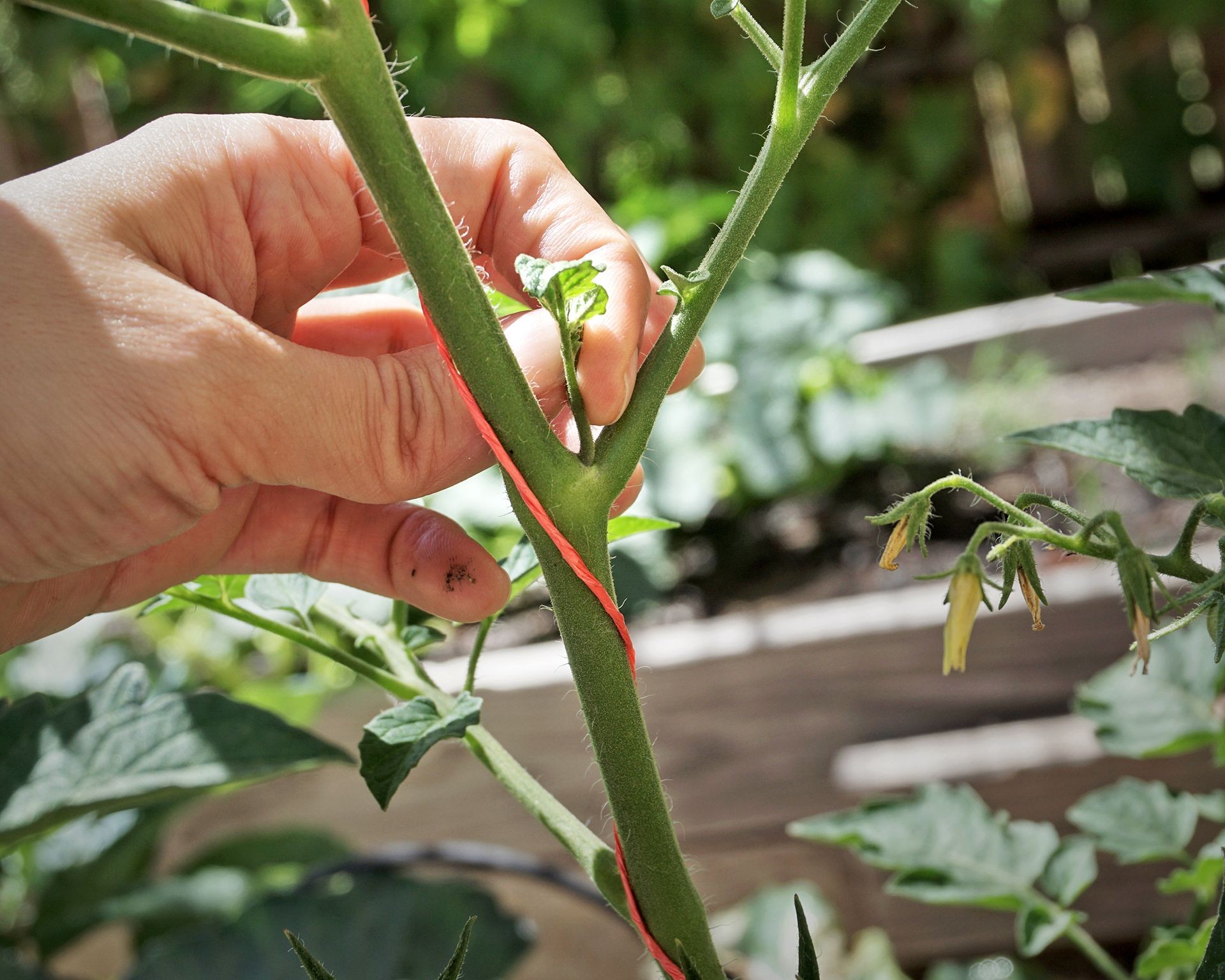 Close-up view of a gardener's hands pinching off a small suckers from the leaf axil of a young tomato plant
Close-up view of a gardener's hands pinching off a small suckers from the leaf axil of a young tomato plant
Growing Cherry Tomatoes in Containers
For individuals with limited garden space, apartment dwellers, or those gardening on balconies and patios, cherry tomatoes are an absolute dream come true. They are perfectly suited for growing in containers, provided you select a pot large enough to accommodate the mature size of the specific variety you choose. Some trailing varieties of cherry tomatoes even make charming and productive specimens when grown in hanging baskets, cascading over the sides.
If outdoor space is truly at a minimum, growing cherry tomatoes indoors in pots is a viable option, provided you have a location that receives sufficient natural sunlight (6-8 hours daily) or you supplement with grow lights. Whether grown indoors or out, it is essential that the container has ample drainage holes at the bottom to prevent waterlogging, and that the potting soil you use percolates well, allowing excess water to escape easily. Container-grown plants require more vigilant monitoring regarding moisture levels, as they tend to dry out more quickly than plants in the ground. Be prepared to water them more frequently.
Supporting Your Growing Tomatoes
As your cherry tomato plants grow larger and begin to bear fruit, providing them with adequate support becomes crucial, particularly for the vining indeterminate types or even bushy determinate varieties weighed down by fruit. Support prevents stems from breaking, keeps fruit off the ground (reducing rot and pest issues), and improves air circulation.
One common method is staking. Drive a sturdy stake (wood, metal, or bamboo) into the soil a few inches away from the plant’s main stalk, being careful not to damage the roots. As the plant grows, gently tie the main stalk to the stake at intervals using soft material like fabric strips or garden twine. Plan to adjust these ties as the plant gains height.
For more vigorous varieties, a robust tomato cage provides all-around support. You can purchase pre-made cages or even build a simple DIY version. Another inexpensive and effective vertical support option, especially for indeterminate types, is a tomato string trellis system, where plants are trained to grow up vertical strings suspended from an overhead support.
Harvesting Your Sweet Rewards
Picking your own fresh, sun-ripened cherry tomatoes directly from the plant is undoubtedly one of the most satisfying highlights of the gardening experience. The exact timing for when to pick tomatoes varies based on your climate and the specific variety you are growing, but generally, you can expect your first harvest about two months after planting.
For most classic red cherry tomato varieties, the fruit is ready to be picked when its color is a vibrant, rich red. The fruit should still feel relatively firm but yield slightly to a gentle squeeze. Determining ripeness can be a bit trickier for varieties that ripen to yellow, orange, or “black.” In these cases, the best way to gauge ripeness and flavor is to taste one! Pick a fruit that has developed its full intended color for the variety and give it a try.
When they are perfectly ripe, cherry tomatoes will detach from the vine with just a very gentle tug at the point where the fruit connects to the stem. It’s often recommended to harvest cherry tomatoes every day or two during the peak of the season, as they ripen quickly and continuously produce new fruit. Regular harvesting also encourages the plant to produce even more blossoms and fruit.
Propagating New Cherry Tomato Plants
While growing from seed is the most common and straightforward method for starting cherry tomato plants, existing healthy plants can also be used to create new plants through propagation via cuttings or suckers. Growing tomato plants from cuttings offers a significant advantage: it allows you to quickly multiply your plants, often yielding rooted clones ready for transplanting within just 10 to 14 days. Keep in mind that plants started from cuttings will typically begin fruiting slightly later in the season compared to those grown from seed.
To propagate from cuttings, select a healthy sucker (the shoot growing in a leaf axil) or a non-flowering stem from a determinate plant. Cut a section that is between 4 to 8 inches (10 to 20.5 cm) long. You can then place the cut end in a glass of water, changing the water every few days, or plant it directly into a small pot filled with moist potting mix. Ensure any leaves below the water line or soil line are removed to prevent rot. Within about a week, the cutting should begin to develop roots and will soon be ready to be transplanted into a larger pot or its final growing location.
Dealing with Pests, Diseases, and Other Issues
Like all plants, cherry tomatoes can occasionally encounter issues with pests, diseases, and environmental stresses. However, their relatively fast growth rate compared to larger tomato varieties often means they reach maturity and produce a significant crop before some common problems become severe. Understanding what to look for can help you address issues promptly.
Common challenges to be aware of include:
- Watering Imbalances: Both insufficient watering (underwatering) and excessive watering (overwatering) can lead to various problems in tomato plants, from wilting and blossom drop to fruit splitting and root rot. Pay close attention to your plants’ appearance and soil moisture levels to gauge their watering needs.
- Overcrowding and Tangling: Cherry tomatoes, especially indeterminate varieties, are notorious for developing into dense, tangled masses if not managed. Providing timely support (stakes, cages, trellises) and consistent pruning helps maintain an open structure, improving airflow and plant health.
- Insect Pests: Aphids and other sap-sucking insects enjoy feeding on tomato plant juices. Caterpillars, particularly the large tomato hornworm, can rapidly defoliate a plant. For control, consider using organic insecticidal soaps or simply handpicking larger pests like hornworms from the plants.
- Diseases: While cherry tomatoes may crop faster, they can still be susceptible to common tomato diseases. Selecting disease-resistant varieties labeled for resistance (often indicated by letters like V, F, T, A) is the first line of defense. Common diseases include Verticillium wilt, Fusarium wilt, tobacco mosaic virus, and Septoria leaf spot. Good cultural practices, such as proper spacing, watering at the base of the plant, and crop rotation, also help prevent disease spread.
- Blossom End Rot: This is a very common issue characterized by dark, sunken spots on the bottom (blossom end) of the fruit. It is primarily caused by a lack of available calcium to the developing fruit, often triggered by inconsistent watering that prevents the plant from taking up calcium from the soil. Using fertilizers specifically formulated for tomatoes often includes added calcium to help prevent this issue, as does maintaining consistent soil moisture.
Conclusion
Growing cherry tomatoes offers a rewarding and relatively easy path to enjoying fresh, delicious fruit right from your garden or patio. Their quick maturity and high yields make them an ideal choice for both seasoned gardeners and newcomers alike, especially those working with limited space. By providing the essential conditions they need – plenty of sunlight, well-draining soil, consistent watering, regular feeding, and appropriate support – you can cultivate vigorous plants that produce an abundance of sweet, juicy cherry tomatoes all season long. Don’t be discouraged by potential pests or diseases; understanding common issues and taking proactive steps will help you successfully navigate challenges.
Ready to experience the joy of harvesting your own cherry tomatoes? Biogarden.asia offers a range of high-quality gardening products, including nutrient-rich soil mixes perfect for containers, balanced fertilizers to boost fruit production, and premium seeds to get you started. Explore our selection and find everything you need to embark on your successful cherry tomato growing adventure. Share your growing journey with us!



